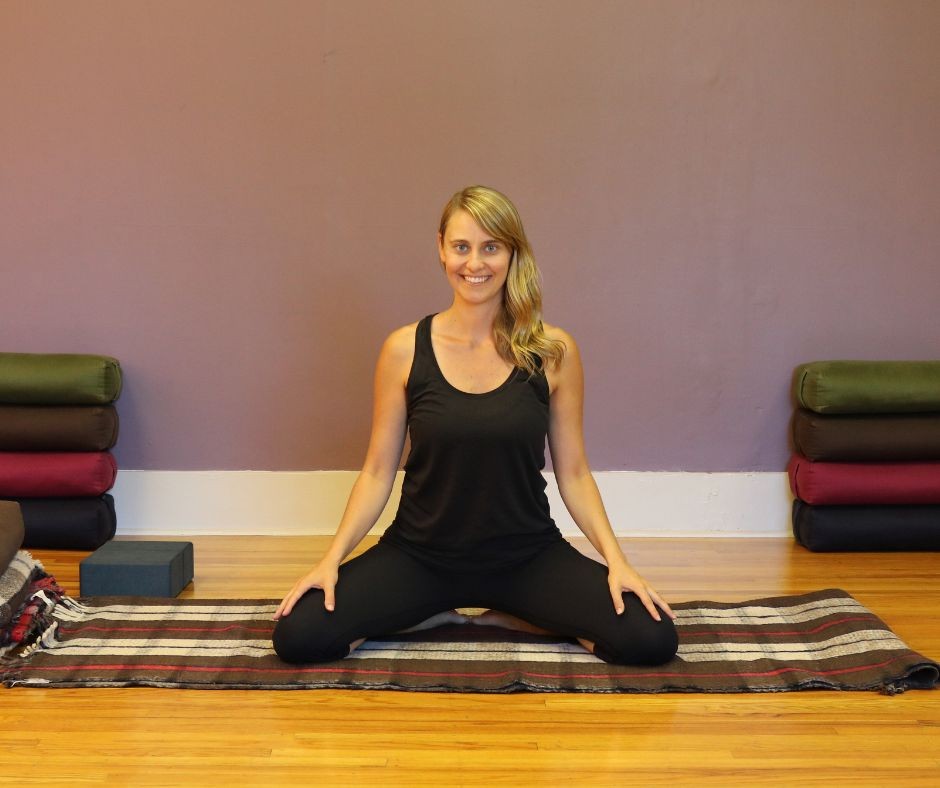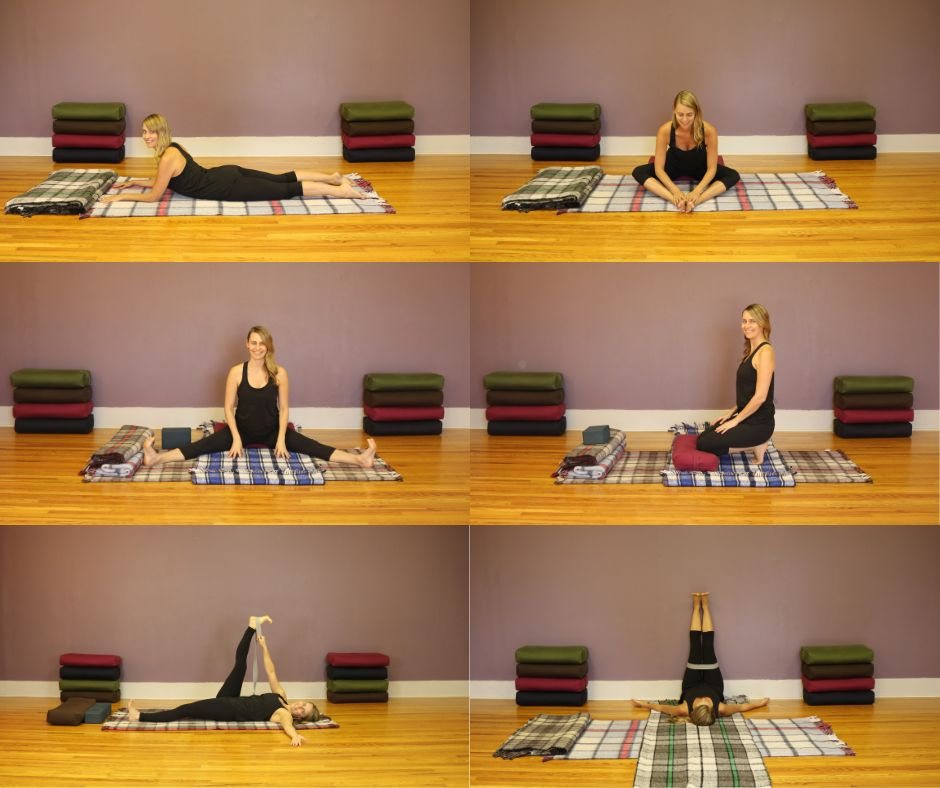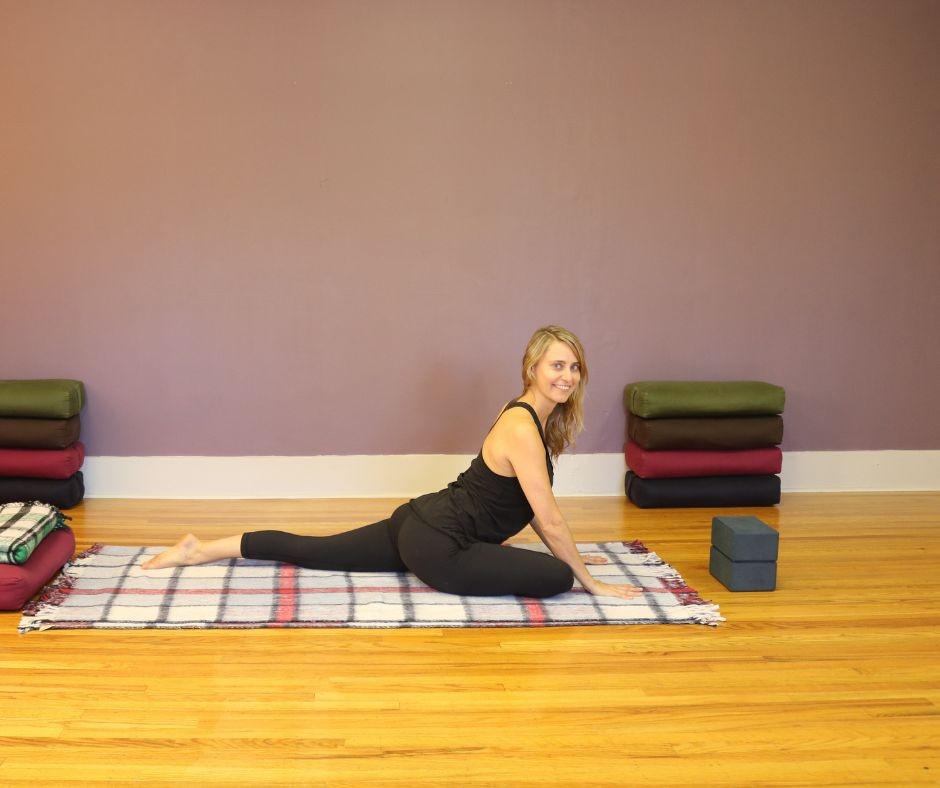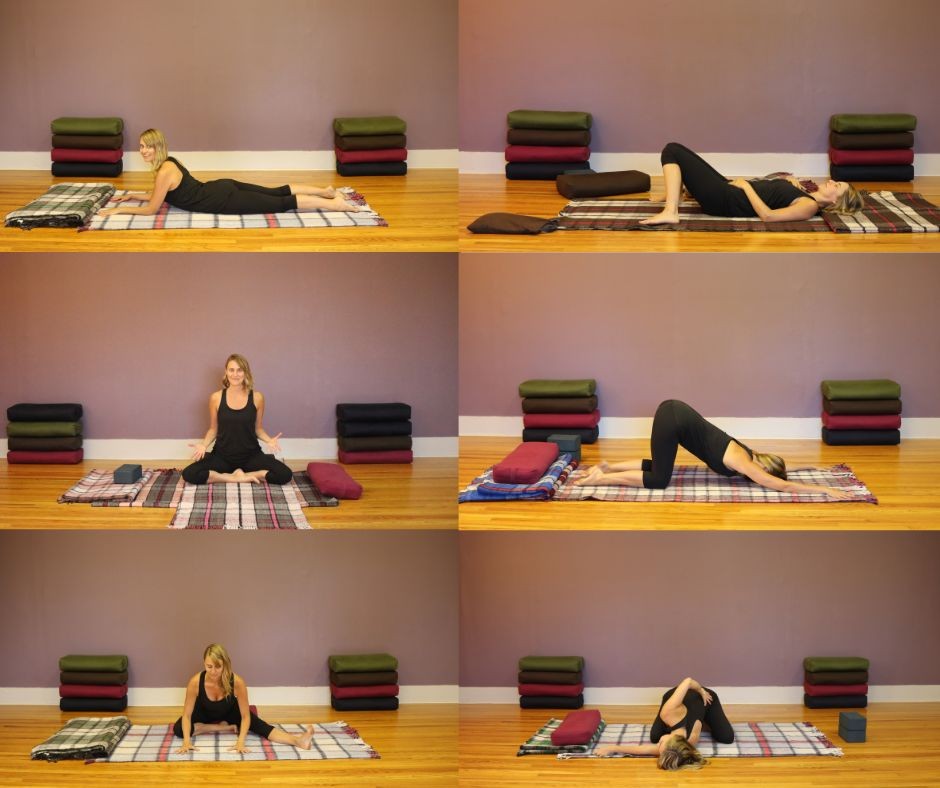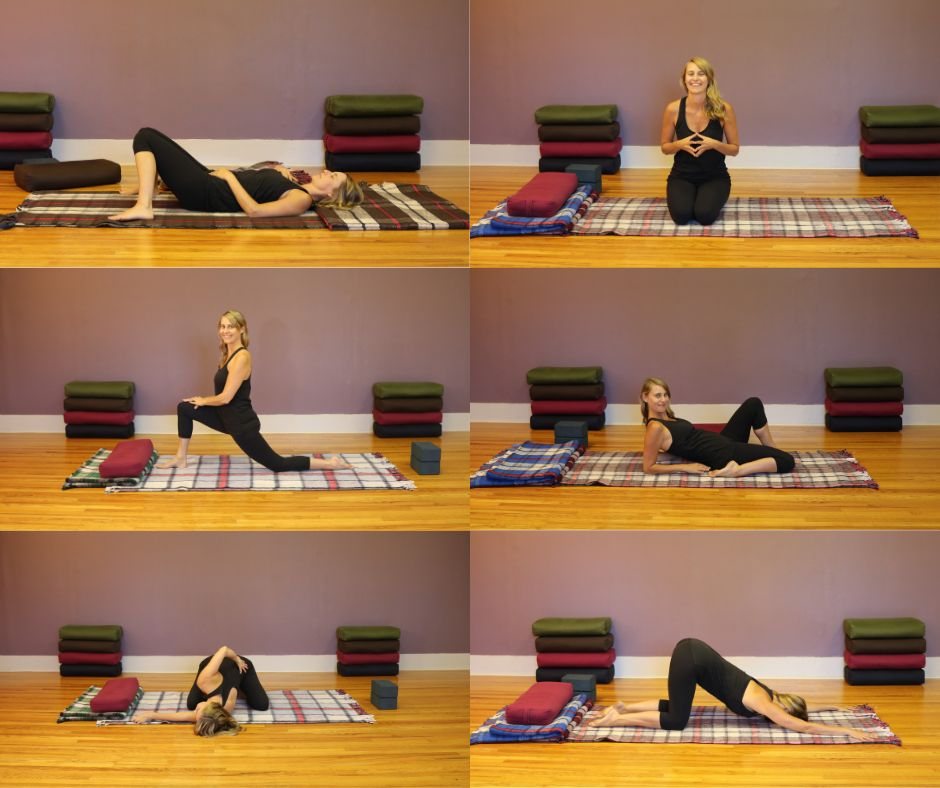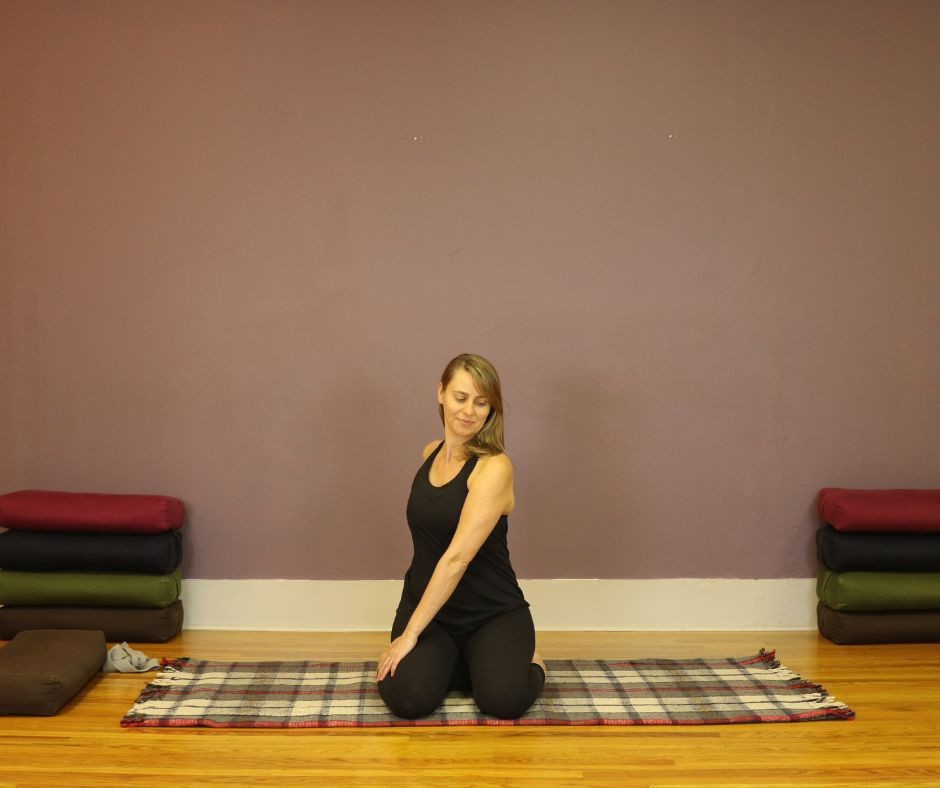Myofascial Planes
Over the last few posts, I’ve explored the body’s myofascial meridians, lines, planes, or sheaths. To learn more, check out my previous posts on the lateral, dorsal, ventral, and core planes.
These planes are a wonderful way to understand how movement, including asana (yoga postures), affects the body’s physical structure. They also provide a helpful map for understanding how to therapeutically use body mechanics and movement to address specific imbalances.
The Inner Spiral
In his book, Thomas Myers describes what he calls “the spiral line” as a continuous fascial band that runs from the side of the skull, crisscrossing around the body down to the arches of the feet. For this post, we’ll focus on the upper section of the spiral line, particularly the band of tissue that wraps from the shoulders and ribs down to the opposite hip.
The upper frontal spiral line travels across the body from the base of the skull to under the shoulder blade on the opposite side and onto the ribs (splenius capitis, rhomboids, serratus). From here, it crosses the abdomen (obliques) to the hip on the opposite side (ASIS).
The lower spiral line is especially noteworthy for its relationship between the feet and legs and the tilt of the pelvis. If the pelvis tilts abnormally due to dysfunction in the spiral line, this could, in turn, affect the gait, foot positioning, and knee tracking, leading to injury and pain.
Simply speaking, this line is related to spiral and twisting movements. It also helps to stabilize the torso and legs. It’s important to mention that the spiral line has relationships with many other bands of tissue discussed in previous posts, so its functions are sometimes controlled or overridden by more dominant movements and patterns. Dysfunction in this line can also strongly impact the proper functioning of the other bands of tissue mentioned in previous posts.
Twists // Liver Stagnation // The Creative Impulse
"The cell itself is essentially spherical in form, following this basic tendency of water, and hence all living matter, to unite its parts into a whole... A second law of nature that acts upon all matter.. is gravity, which irresistibly pulls everything with substance towards the centre of the earth... The interaction of these two tendencies creates movement in the form of downward spiraling. Everywhere in nature this spiral form is present: the shell of a snail, the currents of a meandering stream or a flow of air, the bark of a tree, the unfolding of leaves around the stem of a plant, or the opening of rose petals. As the cells of the human fetus multiply and arrange themselves into distinct structures within the body, they also follow this patterning: the striations within bone tissue spiral downward, enabling the bones to dynamically transfer the force of weight falling to the earth; muscles wrap around the bones in a continuous network of spiraling movement; the heart itself is a muscle which spirals in and around itself; the fluids of the body, too, flow in currents, waves, and gushes, reflecting all the myriad spiraling forms of nature's rivers, oceans, and waterfalls."
Linda Hartley (Wisdom the Body Moving)
When the spiral plane is held tight we can have a feeling of being stuck or tense. When we feel stuck and stressed in Chinese Medicine, there is usually Liver Qi involvement. Along with helping digestion function, the energetic Liver is responsible for the smooth flow of Qi (especially emotional Qi). So, when we feel stuck, stressed, or tense, this is usually due to “Liver Qi stagnation.”
Liver Qi wants to move, and when we’re tense, that Qi gets blocked, leading to physical and emotional difficulties.
The Liver is also related to vision and creativity. When our Liver energy flows, we feel a sense of freedom and our creative impulse returns.
To help move “stuckness” in the body, whether it’s energetic (Liver Qi stagnation) or physical (digestive heaviness and disturbance, or tension in the spiral plane), it’s helpful to incorporate twists into our practice. Twists bring a fresh sense of aliveness into the body and mind because of their ability to “unwind,” reduce tension and free up stagnation in the body’s deep interior.
Movement to Unwind the Spiral Plane
Poses that focus on twisting help to address imbalances in the spiral plane and differences from side to side in the trunk.
- Rhythmic Lying Twist – Lay on your back and ground your feet. On inhale, drop your knees to one side without lifting the feet off the floor (roll onto the inner edge of one foot and the outer edge of the other foot). As you twist, pin the opposite shoulder down – don’t lift it off the floor. Sometimes, this movement with the legs is called “windshield wipers.” Move rhythmically with the breath. As you return to the centre of the exhale, feel the whole body settle and drop before moving again. Go side to side.
- Maricyasana III (sage Marichi seated twist) – Sit on a folded blanket. Extend one leg out on an angle away from the opposite leg. Press the extended leg down to the floor and out through the heel. Bend the other leg, planting the foot as close to the sitting bone as possible. Reach your arm (same side as the bent leg) behind the body and place it on a block with fingers pointing back. Lift the spine and twist towards the bent knee. Hook your elbow on the outside of the knee or hug the knee into the chest. Spin from the lower abdominal fibres and twist on the exhale. To make this pose more accessible, you can use more height under your sitting bones. Practice both sides (start by drawing your right knee in, then your left, squeezing the ascending colon, then the descending colon).
- Lunge Twist with block – From the downward dog pose, step one foot forward, drop the back leg and untuck the toes. Make sure your front knee is stacked above your ankle for this variation. Slide your back leg further out behind you without allowing the “headlights” of the hips (ASIS) to tilt down. Place a block on the inside of the front foot. Reach your arms up and lengthen your side waist. Bring your hands to prayer and twist toward your front leg. Place your bottom hand on the block and the upper arm on your lower back. Twist on exhale, focusing on moving the lower belly over the thigh. Keep the neck in neutral and twist from the belly. If you want to take it deeper, hook your bottom elbow to the outside of the knee to twist.
- Parivrtta Trikonasana (revolved triangle) – Step one foot back and place it on an angle so the toes point a bit forward. Ground both heels. Place a block on the outside of your front foot. To make this pose more accessible, place the block inside the front foot. Draw the outer hip of the front leg back. Reach your opposite side arm up, then reach forward and lengthen the side waist. Begin to twist by placing your hand on the block and rolling over the front leg from the belly. Broaden across the collarbones. Keep pulling the outer hip of the front leg back. The top arm can go to your hip or be raised and stacked above the shoulder.
** Remember—after doing asymmetrical poses, it’s best to return to the midline with poses such as Dandasana, Tadasana, or Downdog before continuing.
I hope that helps to wring out tension and stress in your spiral line. Thank you so much for reading.
Follow along as I explore the fascial planes with the free email series here.


